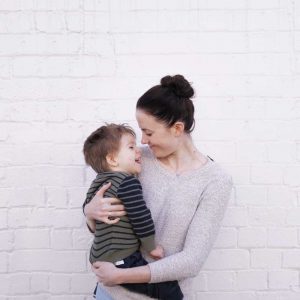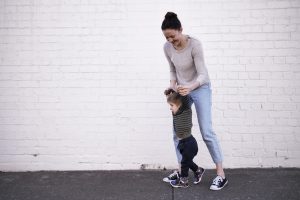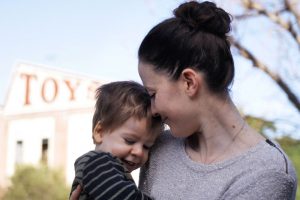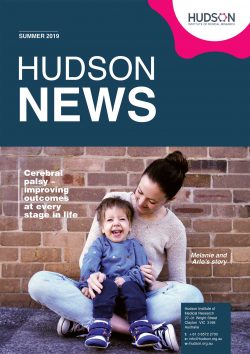MELANIE AND ARLO’S STORY
Arlo is a bright, beautiful three-and-a-half-year-old boy who delights in musicals, including Frozen and Moana, and has an intense love of books.
 Even though Arlo is non-verbal, when his mother Melanie tries to skip words or passages, he can certainly let her know that he’s not impressed.
Even though Arlo is non-verbal, when his mother Melanie tries to skip words or passages, he can certainly let her know that he’s not impressed.
When Arlo was just six months old, his parents were told he had cerebral palsy. Cerebral palsy is measured on a scale of 1–5, 1 being the mildest form, and 5 being the most severe. As the months rolled on, Melanie and her partner, Rowan, were also told Arlo is a 5, and would be unlikely to ever walk. It was heartbreaking news that no parent ever wants to hear.
While many parents know throughout the pregnancy whether their child is a high risk for brain damage, Melanie’s story reveals how cerebral palsy can come with no warning.
Reduced fetal movement
Arlo was four days past his birthing due date when Melanie noticed his movements had lessened, so she and Rowan decided to go to the hospital to make sure nothing was amiss.
“When I arrived at hospital everything looked okay, and I was prepped to be induced the following day. That next morning, just as my waters were about to be broken, Arlo’s heart rate suddenly dropped. It virtually disappeared.
“The midwife scrambled about my belly with a stethoscope trying to find it, the emergency button was pushed, doctors flooded the room, and in an instant I was being whisked down a corridor to theatre,” Melanie said.
This happens to others, not us
Arlo was born by emergency caesarean section in 10 minutes flat, but during that time his brain was deprived of oxygen, which made him a high risk for cerebral palsy. He was immediately placed on oxygen, and had to be cooled down to stop further brain damage. This meant Melanie and Rowan were not able to hold him for the first 72 hours.
“We were told that there was a chance he may have brain damage, and that the worst-case scenario would be cerebral palsy. However, at this point, we didn’t think anything would be wrong.
“You always think, that’s the sort of stuff that happens to other people. It doesn’t happen to us. For six months we told ourselves everything would be okay, right up until Arlo was diagnosed with cerebral palsy. Quadriplegic cerebral palsy.”
Melanie has written a book, Special: antidotes to the obsessions that come with a child’s disability, offering honest, reassuring and relatable insight into navigating the early stages of a child’s disability. By sharing her stories, she offers guidance and simple coping strategies to others whose life takes an unexpected turn. ‘Special’ can be ordered online.
It takes a community
 Now, Melanie, Rowan and Arlo have a great team of specialists that help Arlo thrive. His team includes two speech pathologists, a physiotherapist, an occupational therapist, a feeding specialist and a neurologist.
Now, Melanie, Rowan and Arlo have a great team of specialists that help Arlo thrive. His team includes two speech pathologists, a physiotherapist, an occupational therapist, a feeding specialist and a neurologist.
After being diagnosed as never able to walk, Arlo is now using a gate trainer to aid him getting about. His desire to play and keep up with his younger sister, Odette, spurs on his determination.
“His sight isn’t affected and he isn’t intellectually delayed, but he is non-verbal. We were told his brain damage meant he would only be physically affected. But, of course, using your tongue and mouth muscles is movement.
“We communicate with him on an augmentative and alternative communication, or AAC device, which lets the movement of his eyes communicate with us.”
While Arlo’s dedicated parents and superstar team of specialists are helping him reach his full potential, Melanie hasn’t ruled out that medical advances, such as stem cell therapies, may help improve Arlo’s quality of life.
“We’ve kept Arlo’s sister Odette’s umbilical cord stem cells, just in case.”
Helping kids like Arlo
 Cerebral palsy is a condition that can arise during pregnancy, during childbirth or shortly after birth.
Cerebral palsy is a condition that can arise during pregnancy, during childbirth or shortly after birth.
Our research is working to help kids like Arlo, by providing developing therapies that can be given immediately after birth for babies who have been oxygen deprived and are a high risk for inflammation and brain damage.
Our teams research how early intervention in childhood and adolescence can promote better bone health for adults with cerebral palsy. They are studying factors that contribute to low bone density so their findings will allow for a better quality of life.
Help us find better outcomes for children with cerebral palsy
One in 700 Australian babies are diagnosed with cerebral palsy. It has no known cause, no known cure—but our researchers are on a mission to change this!

